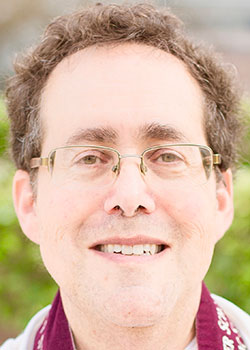Each December, the blood pressure of the Jews of America rises.
Once a year, we feel like outsiders in our own country – bombarded by songs announcing the birth of the “king of Israel,” watching the seasonal eruption of good cheer and kindness (soon forgotten in the drunkenness of New Years,) returning home to unlit, treeless houses amidst the stirring color, smells, and lights of Christmas.
December can be a depressing time to be Jewish.
Yet December also provides evidence for the uncanny sense of the Jewish People to institute whatever it takes to survive as a people, whatever it takes to keep our faith and our heritage strong.
December, you see, witnesses the American/Jewish invention of mega-Hanukkah.
In the Talmudic period, Hanukkah was a minor festival, celebrating the liberation of Israel and the Temple from foreign domination, the restoration of sacred worship in place of pagan desecration, and the ensuing political autonomy of the Maccabees and the Jewish people.
From the time of the Maccabees (around 160 B.C.E.) until our century, Hanukkah was celebrated simply – one menorah, a few coins for the kids, and oily foods (like latkes) to remember the miracle of the oil that burned for seven days. Lighting the candles was the talmudically-instituted mitzvah that defined the celebration: the Rabbis instructed each household to pirsum ha-nes (proclaim the miracle) by placing their hannukyot – their Hanukkah menorahs – in the window so its light would shine out to the world.
But our century provided a unique challenge to American Jews. Surrounded by a welcoming yet imperial culture – one which accepted anyone who would take on its ways – Christmas became a major threat to Jewish peace of mind and survival.
How did the Jews respond?
Some reacted by melting in – by putting up “Hanukkah bushes” (can you imagine how offensive that must seem to pious Christians?!) Most Jews, however, reacted by feeling uncomfortable with the season and with their Jewishness.
Some reacted by putting up festive blue and white lights on their roof, their windows, and around their homes. They purchased electric menorahs to shine through their windows, while some even built Maccabee statues for the front lawns.
Rather than passing a few small coins to the kids, they began giving significant gifts – not just once, but on every day of the holiday.
While we may not all share this aesthetic style, there is something wonderful about its zest and brazenness – a refusal to be an outcast, to feel ashamed in their own country. There is something stirring in seeing a Jewish family that responds to feeling threatened not by diminishing their Jewish celebration but increasing it.
The rabbis of the Talmud established lighting the hanukiyot to proclaim the miracle for all to see. They used candles – the brightest lights of their age.
Who knows, if they lived in our time, they might have mandated big blue light bulbs on the roof and a giant Hannukiyah in every window.
There is nothing wrong with using the building blocks of our Jewish traditions to strengthen Jewish resolve and to defend Jewish living. Our people have always expressed their determination to thrive by utilizing whatever rituals or customs were at hand. We are witness to that same dynamic unfolding in our midst.
This year, let your lights shine!


 Download PDF
Download PDF